Roofers in Spring Texas carefully examine roofs. They look for signs the roof is worn or damaged. They look at shingles to see if they are curled or missing pieces. They inspect flashing and vents for rust or if they are not aligned properly. They also check for signs of water damage like discoloration or moisture buildup. Gutters and downspouts are assessed for clogs and proper function. Additionally, they look for animal infestations and structural issues. By understanding these points, one can discover ways to protect and maintain their roof.
Key Takeaways
- Professional roofers assess shingles for signs of curling, cracking, or missing pieces to determine overall wear and tear.
- They inspect flashing and roof vents for corrosion, cracks, or misalignment to prevent water infiltration.
- Roofers check for water damage, looking for discoloration, warped shingles, and moisture buildup to assess structural integrity.
- They evaluate gutter and downspout functionality to ensure proper water flow and prevent potential water damage.
- Regular inspections by roofers help in early detection of issues, extending roof lifespan and avoiding costly repairs.
Assessing Shingle Condition
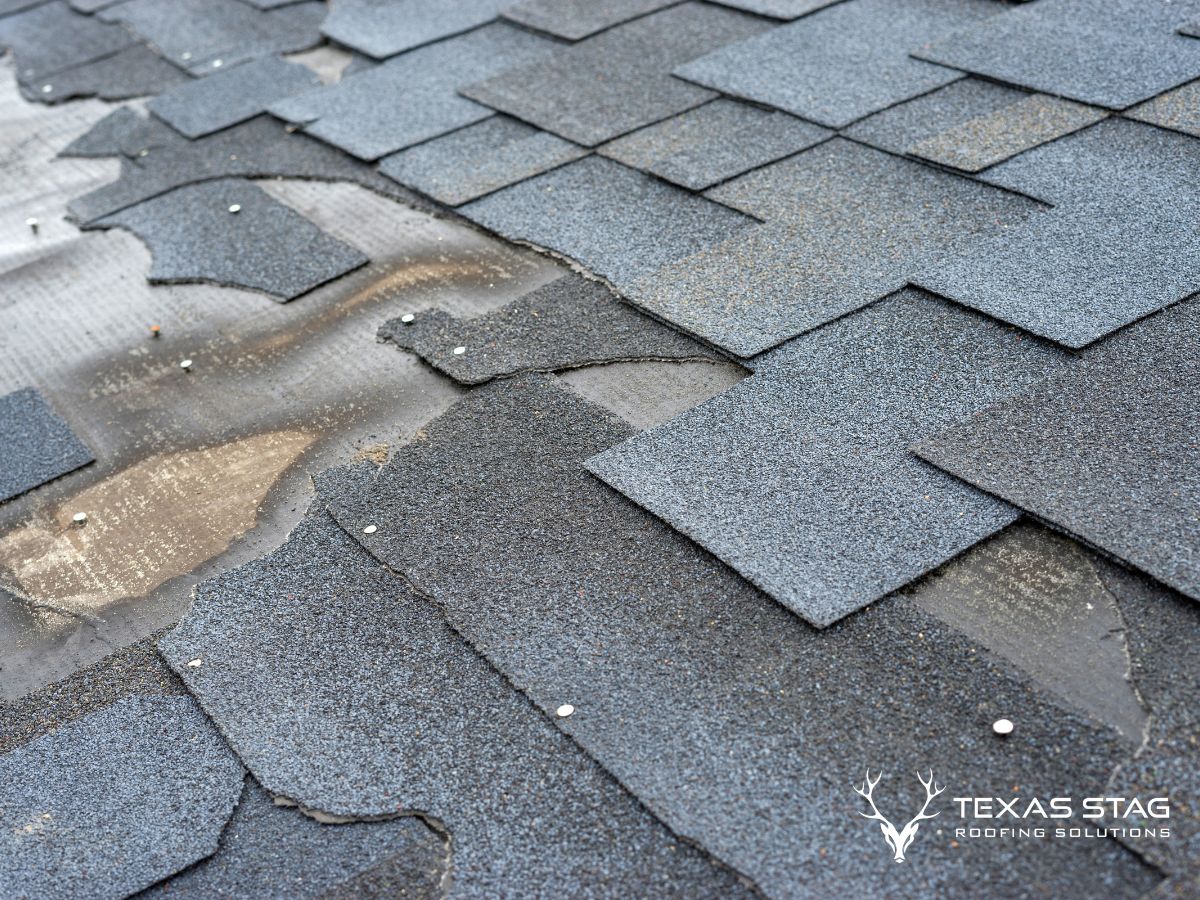
When evaluating the state of shingles on a roof in Spring, TX, it is crucial to examine several key indicators of wear and damage. Homeowners and professionals alike must focus on assessing shingle condition to ensure the roof’s longevity and performance.
Checking roofs is important. It helps find problems like bent shingles cracked shingles, or missing shingles. These issues may signal bigger troubles underneath. Inspectors look for granule loss, a sign of aging shingles, often evident as granules collect in gutters.
Another warning sign is blistering, which can occur from trapped moisture or poor ventilation. Additionally, algae growth, identified by dark streaks on shingles, can compromise the roof’s integrity over time.
Regular roof inspection services help in diagnosing these issues early, preventing costly repairs or premature roof replacement. By understanding these aspects, individuals can make informed decisions about maintenance and necessary repairs, ensuring their roof remains in optimal condition.
Examining Flashing for Damage

Beyond assessing shingle condition, a thorough roof inspection in Spring, TX also involves examining the flashing for signs of damage.
Flashing, typically made from metal, serves a crucial role in directing water away from critical areas of the roof, such as chimneys, vents, and valleys. During inspections, professionals look for any signs of corrosion, cracks, or separation from the roofing material. These issues can lead to water infiltration, compromising the roof’s integrity.
Inspectors also check for proper installation and any signs of wear due to weather exposure. Over time, flashing can become loose or misaligned due to wind, temperature fluctuations, or improper initial installation.
Such conditions may necessitate immediate repair or replacement to prevent potential leaks. The goal of examining the flashing during a roof inspection is to ensure that all components are functioning correctly to maintain the roof’s overall protective capabilities and prolong its lifespan.
Inspecting Roof Vents and Seals
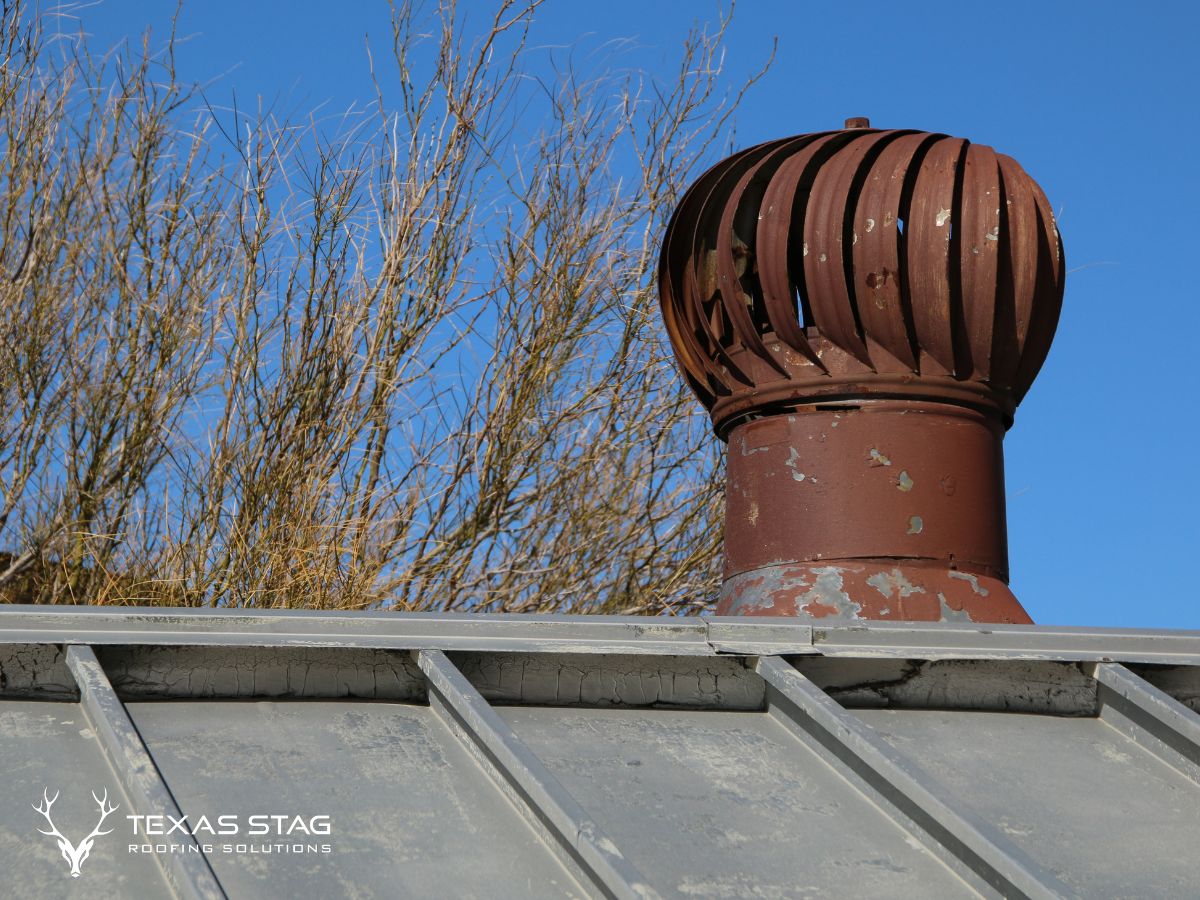
How crucial is it to inspect roof vents and seals during a roof inspection in Spring, TX? A roof inspection can provide valuable insights into the condition of these components, which play a vital role in maintaining a home’s ventilation and energy efficiency.
Professional roofers understand that damaged or improperly sealed roof vents can lead to energy loss and increased utility bills, as well as invite pests or moisture into the home.
During inspections, professional roofers thoroughly examine the seals around vents for signs of wear, cracking, or gaps. They check for any blockages or debris that might impede proper airflow.
Ensuring that seals are intact and vents are clear is essential to prevent future issues. A detailed inspection by a professional roofer can identify and address potential problems early, safeguarding the integrity of the roof and enhancing the overall performance of the home’s roofing system.
Checking for Signs of Water Damage
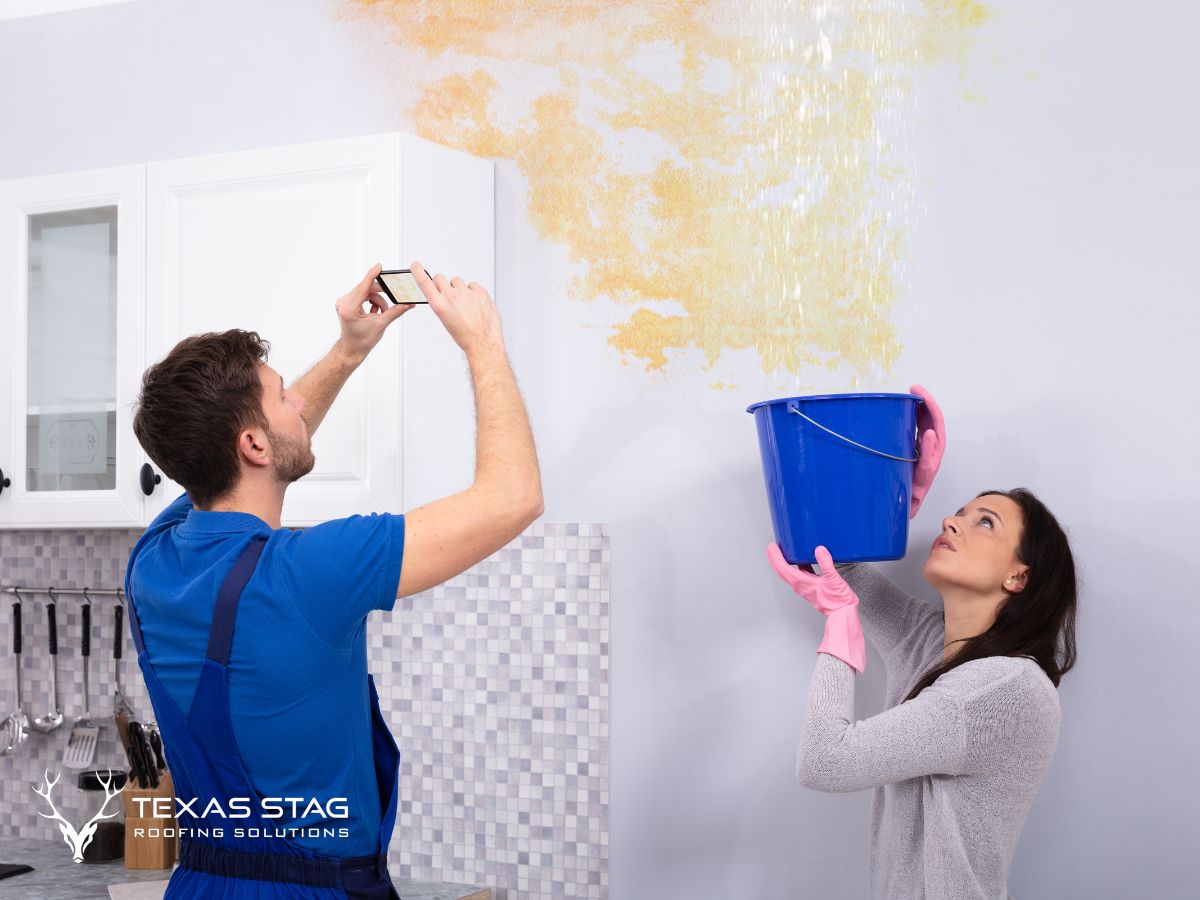
In the process of examining roof vents and seals, checking for signs of water damage becomes equally significant. During a roof inspection, professionals meticulously search for indicators such as discoloration, warped shingles, or moisture buildup. These signs, often subtle, can reveal underlying issues that, if left unaddressed, may lead to costly repairs.
A keen eye is essential to identify water stains on the ceiling or walls, which are telltale signs of leakage. Roofers also examine areas prone to water accumulation, such as valleys and flashing, where water damage might originate. By addressing these problems early, homeowners can prevent structural deterioration and mold growth.
In Spring, TX, where weather conditions can fluctuate, a thorough roof inspection ensures that any vulnerability to water damage is promptly managed. Professional roofers employ their expertise to safeguard homes against the pervasive threat of water intrusion, securing the integrity of the roofing system.
Evaluating Gutter and Downspout Functionality
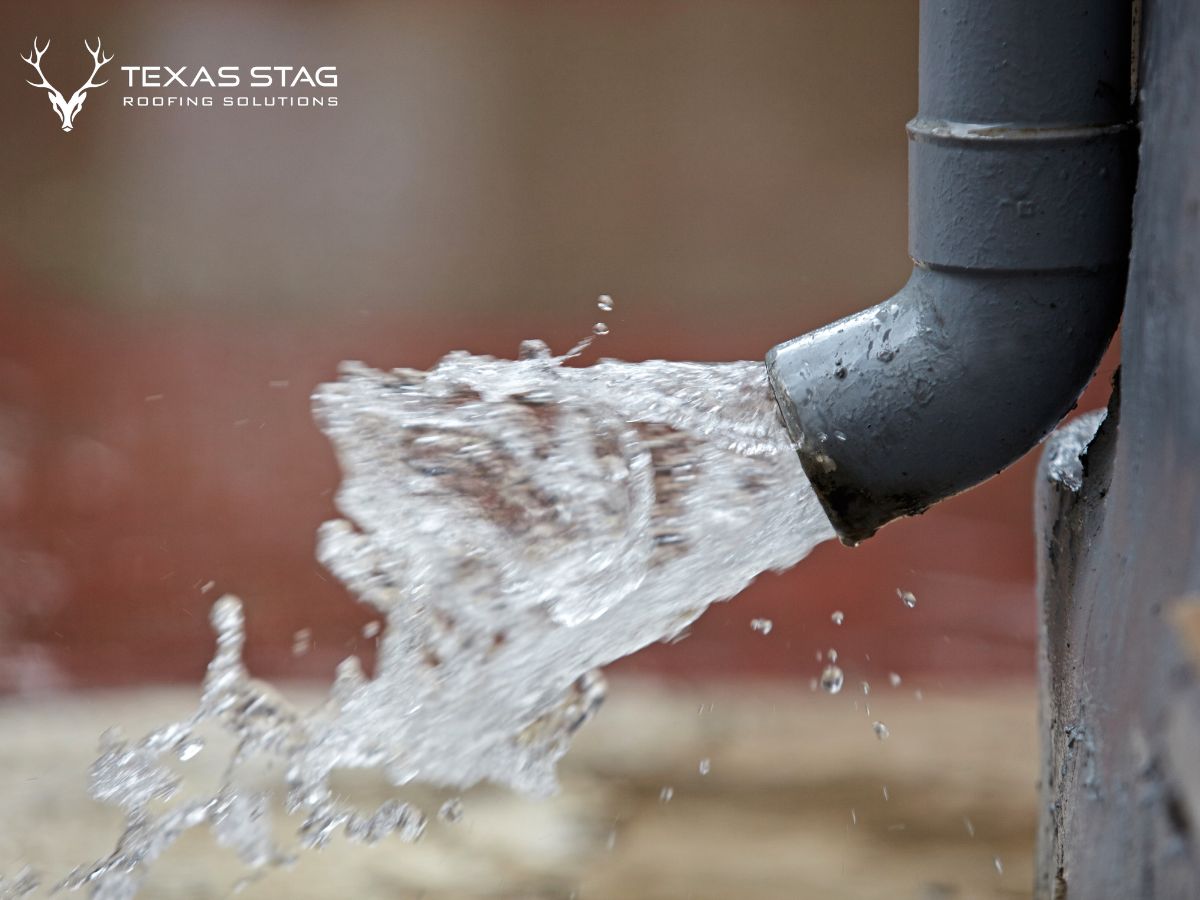
Proper evaluation of gutter and downspout functionality is crucial during a roof inspection, especially in regions like Spring, TX, where heavy rainfall can occur.
Professional roofers understand that efficient water drainage is vital to prevent water damage to both the roof and the building’s foundation. During a roof inspection, they closely examine the gutters for signs of clogging, damage, or sagging, which can impede water flow.
Downspouts are also assessed to ensure they are securely attached and directing water away from the structure. Roofers look for any blockages that might cause water to back up and overflow, potentially leading to roof leaks or erosion around the foundation.
Additionally, they check for proper alignment and slope, ensuring seamless water discharge. By thoroughly evaluating these components, roofers can recommend necessary repairs or maintenance, safeguarding the property against the adverse effects of inadequate water management.
Identifying Moss and Algae Growth

Following the assessment of gutters and downspouts, another vital aspect of roof inspections in Spring, TX, is identifying the presence of moss and algae growth.
These organisms can thrive in the humid climate of Spring, TX, and if left unchecked, can lead to significant roof damage over time. Moss and algae not only compromise the aesthetic appeal of a roof but can also retain moisture, leading to the deterioration of roofing materials such as shingles.
During a roof inspection, professionals meticulously examine shaded and damp areas where moss and algae are most likely to develop. The identification of these growths is crucial because they can cause shingle lifting, resulting in potential leaks and reduced roof lifespan.
Early detection through thorough roof inspections allows homeowners to take preventive measures, such as cleaning and applying protective treatments, thereby safeguarding the structural integrity and longevity of their roof.
Inspecting Attic and Roof Ventilation
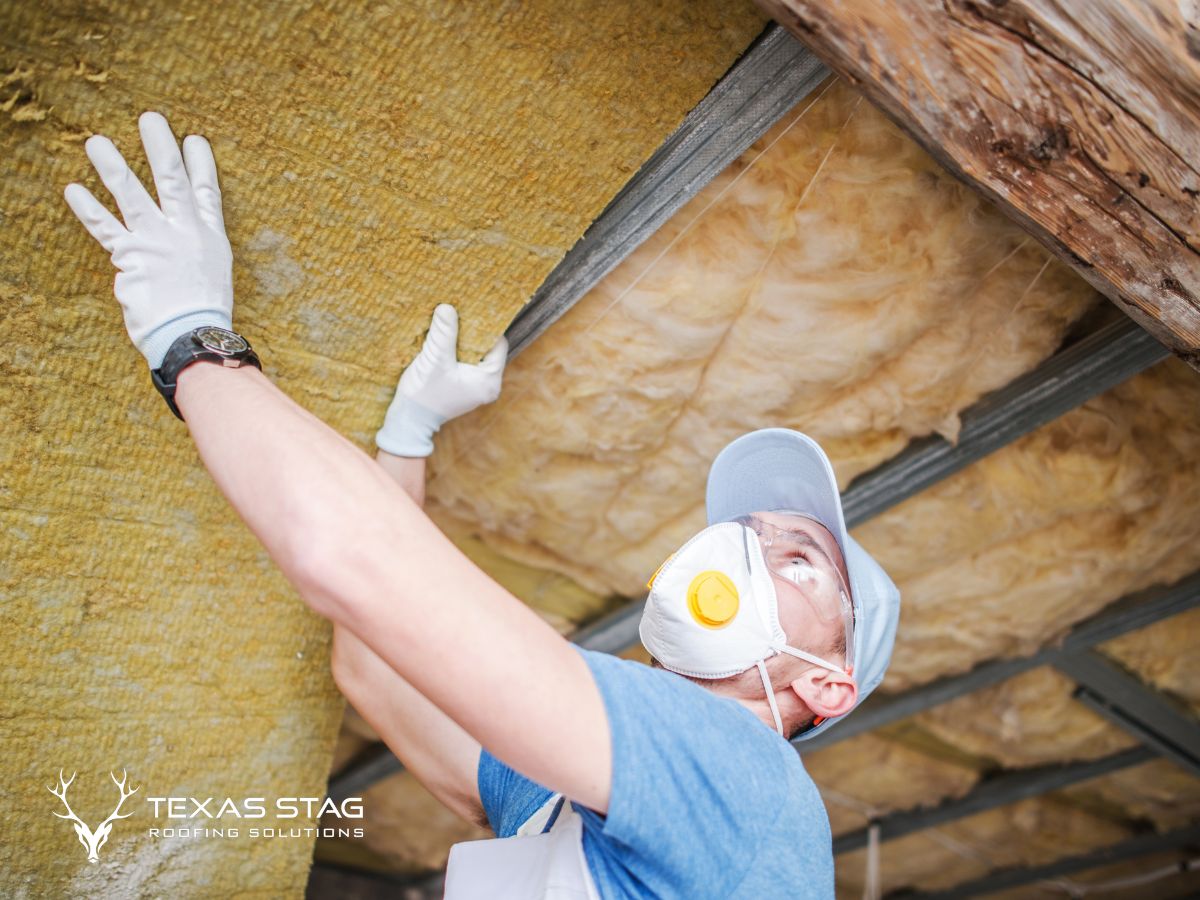
How crucial is it to ensure adequate attic and roof ventilation during a roof inspection? Ensuring proper ventilation is essential, as it directly impacts the longevity and efficiency of a roof system.
During a professional roof inspection, experts assess ventilation to prevent issues such as moisture accumulation, which can lead to mold growth and structural damage.
Roofing services often include checking that air circulates efficiently through soffit, ridge, and gable vents. This circulation helps to regulate attic temperatures, reducing the risk of ice dams in colder months and excessive heat that can warp shingles in warmer climates like Spring, TX.
Inadequate ventilation can result in increased energy costs, as cooling and heating systems must work harder to maintain indoor comfort.
Thus, professional roof inspections prioritize evaluating both attic and roof ventilation systems to ensure they meet industry standards, thereby safeguarding the structural integrity and energy efficiency of the home.
Looking for Signs of Animal Infestation
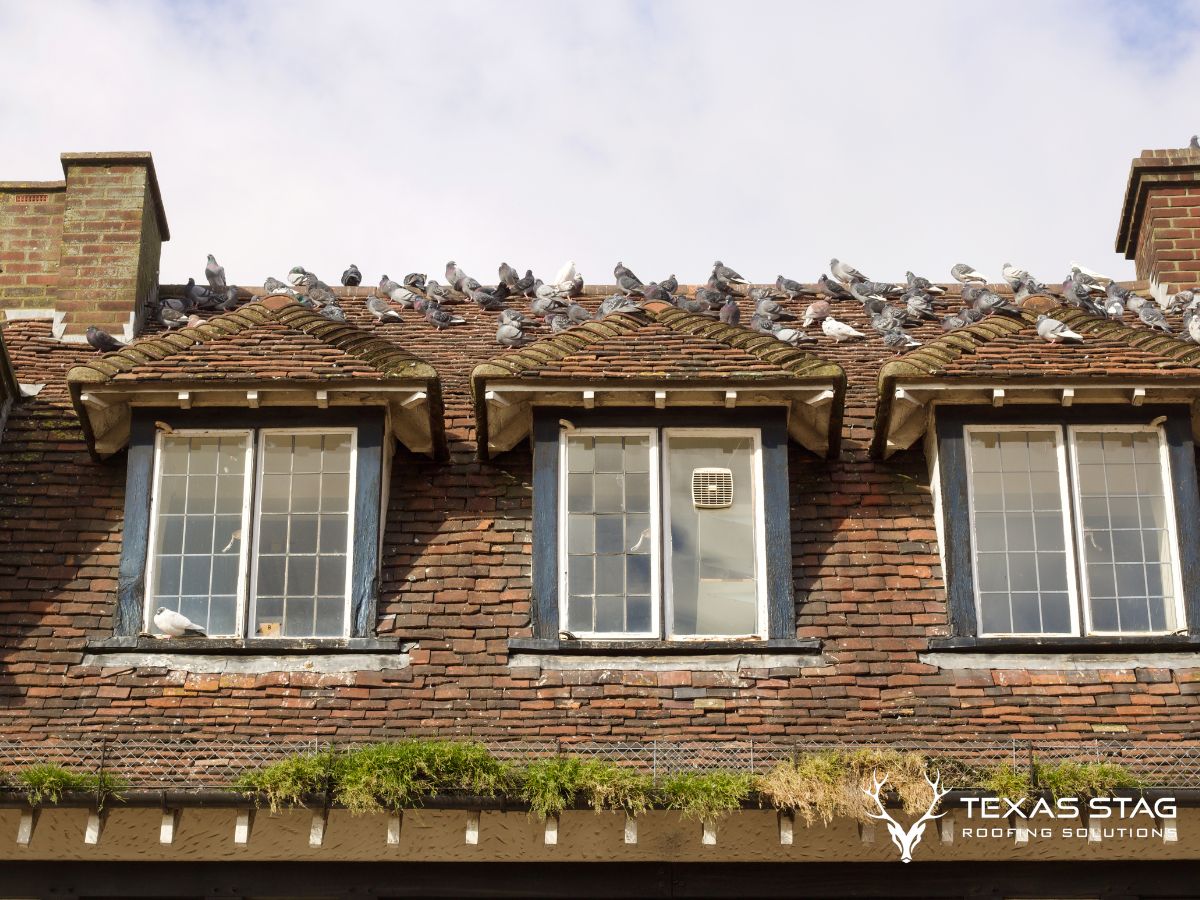
Why is it important to look for signs of animal infestation during a roof inspection?
During roof inspections, a roofer in Spring TX must identify indications of animal activity as these creatures can cause significant damage to roofing structures. Squirrels, birds, and raccoons often seek shelter in attics, where they can chew through wiring, insulation, and even structural elements, leading to costly repairs.
Additionally, their nests can block ventilation, affecting the roof’s overall functionality.
A thorough inspection involves checking for evidence such as droppings, nesting materials, and chewed areas. These signs alert the roofer to potential entry points that need sealing to prevent further access.
Missing shingles or damaged soffits can also indicate animal intrusion. By addressing these issues during roof inspections, homeowners in Spring TX can prevent future infestations and preserve the integrity of their roofing systems, ultimately saving time and resources on unnecessary repairs.
Reviewing Roof Structural Integrity

After addressing potential animal infestations, a roofer in Spring TX turns their attention to assessing the roof’s structural integrity. During roof inspections, they meticulously examine crucial components that ensure a roof’s durability and safety. Key areas of focus include the trusses, rafters, and decking. These elements form the backbone of the roof structure, and any compromise can lead to significant issues.
| Component | Purpose | Signs of Concern |
| Trusses | Support and distribute weight | Warping or sagging |
| Rafters | Provide structural framework | Cracks or splits |
| Decking | Surface for roofing materials | Soft spots or rot |
Inspectors look for signs of warping, cracks, or soft spots, indicating potential weakening. Catching these issues early can prevent expensive repairs and ensure the roof’s longevity. Understanding these elements empowers homeowners to appreciate the importance of regular roof inspections in maintaining their home’s structural integrity.
Evaluating Roof Age and Wear

Determining the age and assessing the wear of a roof are crucial steps in any roof inspection process. Professional roofers understand that the condition of your roof significantly impacts its longevity and functionality.
During roof inspections, they begin by evaluating the roof’s age, often through records or visual indicators such as material type and degradation levels. Older roofs, especially those nearing their expected lifespan, are more susceptible to wear and potential failures.
Inspectors meticulously examine shingles for signs of curling, cracking, or granule loss, all indicators of aging. Additionally, they check for sagging or uneven areas that suggest underlying structural issues.
Identifying moss, algae, or water stains can also highlight age-related wear. By understanding these elements, roofers can provide accurate assessments and recommend necessary maintenance or repairs to preserve the condition of your roof.
This careful evaluation helps homeowners plan for future roofing needs and avoid costly damage.
Final Thoughts
Regular roof inspections are essential for maintaining the structural integrity, energy efficiency, and longevity of your roof in Spring, TX. Professional roofers thoroughly assess shingles, flashing, vents, gutters, and attic ventilation to detect potential issues before they escalate into costly repairs. By proactively identifying signs of water damage, animal infestations, or wear and tear, homeowners can take preventive measures to protect their investment. Ensuring timely maintenance and repairs not only extends the lifespan of your roof but also enhances the overall safety and efficiency of your home.

